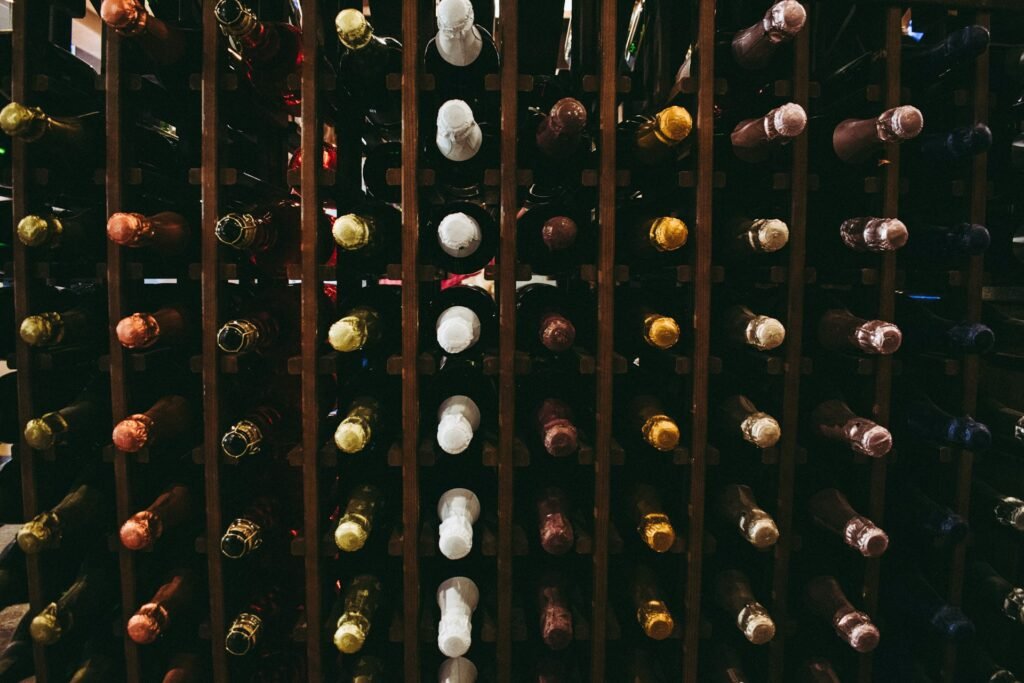This post may contain affiliate links which means we may receive a commission at no cost to you, if you make a purchase through a link. Please see our full disclosure for further information.
Whether you’re a casual wine lover with a few bottles stashed away or a serious collector building a curated set, proper storage is non-negotiable for keeping wine’s flavor, aroma, and quality intact. That’s exactly what Wine Storage Guide: Methods, Tools & Wine Fridges is here for—this breakdown covers everything from basic do’s and don’ts to high-end tools and specialized wine fridges, so you never let a good bottle go to waste. No matter your space or budget, you’ll find simple, effective ways to preserve your wine’s best qualities.
First: The Golden Rules of Wine Storage
Before investing in tools or fridges, start with the core wine storage principles—they’re the backbone of keeping wine in top shape. These aren’t just suggestions; they’re rooted in how wine ages and maintains its character:
- Temperature: Stick to 55°F (13°C) to 60°F (16°C). Anything warmer than 70°F (21°C) speeds up aging, turning vibrant reds flat and crisp whites dull. Colder than 40°F (4°C) freezes wine, which can crack bottles and ruin texture.
- Humidity: Aim for 60-70% humidity. Low humidity dries out corks, letting air seep in and spoil wine; too much humidity can warp labels (a minor issue, but frustrating for collectors).
- Light: Keep bottles out of direct sunlight or bright artificial light. UV rays break down wine molecules, causing “light strike”—a stale, skunky taste that’s impossible to fix.
- Vibration: Avoid moving or shaking wine. Vibrations disturb sediment (especially in aged reds) and disrupt the slow aging process, so skip storing bottles near fridges, washers, or speakers.
- Position: Always store bottles on their sides. This keeps the cork moist, preventing it from shrinking and creating gaps for air.
High-End Tools to Elevate Wine Storage
For those who want to take their wine care up a notch, specialized tools blend functionality with elegance—they don’t just work well; they add a touch of sophistication to your space, too:
1. Solid Wood Wine Racks (Oak or Mahogany)
A quality wooden rack is more than decor—it’s a storage workhorse. Solid oak or mahogany racks are durable, absorb minor vibrations (better than metal or plastic), and complement most home styles. Look for designs with slotted shelves to hold bottles securely on their sides, plus adjustable spacing to fit different sizes (from standard Bordeaux bottles to large Champagne magnums). Many brands offer custom options, too—perfect for filling a walk-in cellar or a small nook in your kitchen.
2. Digital Humidity & Temperature Monitors
Precision matters when storing wine, and a digital monitor takes the guesswork out. Opt for a wireless model that sends real-time alerts to your phone if conditions dip outside the ideal range (e.g., if humidity drops below 55% or temperature spikes above 65°F). Sleek, minimalist designs mean they won’t clash with your racks or decor—just a small, helpful tool to keep tabs on your collection.
3. Lead-Free Crystal Decanters (for Short-Term Storage)
Decanters are mostly for serving, but they also work for short-term storage (1-2 days) of opened bottles. Lead-free crystal is non-porous, so it won’t absorb wine flavors or leave residue. Choose one with a tight-fitting stopper to seal in freshness—ideal for when you open a bottle but don’t finish it in one sitting, like a bold Cabernet or a delicate Pinot Noir.
4. Wine Preservation Systems (for Opened Bottles)
If you often have leftover wine, a preservation system is a game-changer. Top models use a thin needle to access wine without removing the cork, then replace the air inside the bottle with argon gas (inert, so it doesn’t react with wine). This keeps opened bottles fresh for weeks—perfect for expensive vintages or rare bottles you want to savor over time, not in one night.
Wine Fridges: The Ultimate Storage Solution
Why opt for a wine fridge over other storage options? For most people, it’s the easiest, most reliable way to hit all the key storage marks we covered earlier. A standard kitchen fridge just won’t cut it—it’s too cold (35-40°F/2-4°C), too dry (30-40% humidity), and filled with food odors that can seep into corks. Wine fridges are designed specifically for wine’s needs, so you don’t have to compromise.
Types of Wine Fridges to Consider
- Single-Zone Wine Fridges: Great for beginners or anyone who mostly collects one type of wine (e.g., all reds or all whites). They keep all bottles at the same temperature—usually 55°F (13°C) for reds, but adjustable to 45°F (7°C) for whites. Sizes range from small (12-bottle capacity, perfect for countertops) to medium (40-bottle, ideal for a pantry or closet).
- Dual-Zone Wine Fridges: Perfect for collectors who love both reds and whites. They have two separate compartments—one for reds (55°F/13°C) and one for whites (45°F/7°C)—so you don’t have to choose between proper storage for either. Many come with tinted glass doors (to block UV light) and quiet compressors (no vibrations to disturb your wine).
- Built-In Wine Fridges: For a seamless look, built-in models fit under countertops or into cabinetry. They need proper ventilation (check the manufacturer’s guidelines) and often have touchscreen controls and LED lighting (safe for wine, since it emits no UV rays). They’re a great choice if you want your storage to blend with your home’s design.
Key Features to Look For
- Compressor vs. Thermoelectric: Compressor fridges are more powerful (good for large collections or warm rooms) but slightly noisier. Thermoelectric fridges are quiet and energy-efficient (great for small spaces) but work best in cool, consistent temperatures.
- Humidity Control: Look for fridges with a built-in system (like a water reservoir or dampening pad) to keep humidity in the 60-70% range—no more dry corks.
- Shelving: Wooden shelves absorb vibrations and look elegant; wire shelves are easier to clean. Both should be adjustable to fit different bottle sizes.
- Capacity: Think about how many bottles you have now and how many you might add. A 24-bottle fridge works for casual drinkers; serious collectors may need 100+ bottle models.
Final Tips for Better Wine Storage
- Don’t overcrowd: Leave space between bottles for air circulation—this helps keep temperature and humidity consistent throughout your storage area.
- Avoid heat sources: Place racks or fridges away from windows, radiators, stovetops, or even warm light fixtures—heat is wine’s worst enemy.
- Rotate your collection: If you collect aged wines, use the “first in, first out” rule—drink older bottles before newer ones to ensure you enjoy each at its peak.
Why Proper Wine Storage Matters
At its core, proper wine storage is about honoring the winemaker’s craft—every bottle is the result of months (or years) of work, from growing grapes to aging the wine. Whether you’re storing a $20 everyday red or a $500 vintage Bordeaux, the right methods, tools, or fridge ensure you taste the wine exactly as it was meant to be.
You don’t need a massive cellar to keep wine well—even a small wine fridge or a well-placed rack can make a huge difference. With the tips here, you’ll be able to preserve your wine’s flavor and enjoy every sip, no matter how long you keep it.
Uncover further inspiration in our blog.
Wine Spectator Magazine Top 100 Wines
The World’s 50 Best Vineyards | The List and Awards
The World of Fine Wine – World’s Best Wine List Awards















